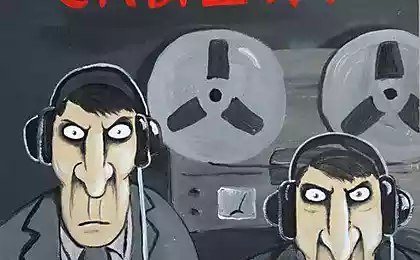206
The Biggest Mistakes in Communication: How to Talk So We Can Be Heard

Introduction. Every relationship, from family to workers, is built on communication. But why sometimes even the simplest messages lead to misunderstandings and conflicts? It’s not just about what we say, but how we do it. Words can be misinterpreted, nonverbal signals can be ignored, and the tone of communication can hurt the other person more than we assume. As a result, there is a general impression that we are “not heard”, although formally we are listened to. This article focuses on the main mistakes in communication – both verbal and nonverbal – as well as specific techniques that allow us to become more understandable, convincing and friendly in the eyes of interlocutors.
Why do people often not hear each other?
When two (or more) people engage in a dialogue, their job is to build a rapport. However, researchers from the American Psychological Association point out that more than half of conflicts (about 60%) arise from misinterpreting each other’s messages. Why is this happening?
- Different worldviews. Each person has a unique life experience, values and attitudes that affect the perception of what is said. What is obvious to one person may seem unacceptable or strange to another.
- Unconscious expectations. We want our interlocutor to understand us half-wordly, and we ignore the fact that he is not obliged to “read” our implied meanings.
- Nonverbal and tone of voice. The vast majority of information (according to various studies – from 60% to 90%) is transmitted not by words, but by intonations, facial expressions, gestures. If we do not follow our nonverbal language, we risk transmitting contradictory signals.
- Unformulated thought. We may think that the idea is understandable, but sometimes we do not have time to “edit” it in our head before uttering it, and we get a confused stream of words, which the interlocutor interprets as “something not very clear”.
All these factors complicate communication and force us to look for ways to express ourselves more clearly, politely and so that the interlocutor really “hears” us, and not just formally nodding his head.
Common mistakes in verbal communication
Even if we use the richest vocabulary, it does not guarantee that we will be properly understood. Below are the main “traps” when formulating thoughts.
1. Blurred wording and excessive abstraction
Expressions like “business is going well”, “we have problems with the project”, “I think something is wrong” are vague phrases that leave room for different interpretations. The interlocutor cannot understand exactly what the problem is and what are the ways to solve it.
- How to fix: Try to give facts and specifics. Instead of “there are problems with the project”, it is better to say: “We are 3 days behind schedule, we do not have enough artist for the design of the main page, and we will not be in time for the deadline without reworking.” So the interlocutor will have an accurate understanding of the situation.
2. Use of critical or accusatory language
"You're always late!", "You're the reason we lost a customer!" - such remarks instantly elicit a defensive reaction. Studies published in medical databases confirm that aggressive rhetoric provokes a surge in cortisol levels in the interlocutor, impairing rational perception and increasing the intensity of emotions.
- How to fix: Try "I-sayings." Instead of “You’re always late!” say, “It’s hard for me to plan our day when you’re late.” I feel the stress of uncertainty.” So you shift the focus from blame to personal feelings and needs, removing direct pressure from the interlocutor.
3. Excessive professional language
Managers, lawyers or IT specialists often use specific terms, forgetting that the interlocutor may not be familiar with this language. As a result, the hearer “turns his head”, but does not really understand the meaning of what was said. This leads to distortion of information and slows down decision-making.
- How to fix: Use as simple and common words as possible. If you need to enter a term, define it immediately to avoid confusion.
Nonverbal Mistakes: What We Say Without Words

In addition to the content of words, non-verbal context is important in communication. What do we look at, how do we gesture, what is our posture, what happens to the intonation of our voice? This can support or contradict our words.
1. Mismatch between facial expressions and words
If you say “I’m very glad to see you!”, but at the same time there is no smile on your face, and the look is aimed at the floor, the interlocutor will rather believe the nonverbal signals than the words spoken. Psychologists note that the human brain primarily reads the facial expression and voice, after which it already processes the semantic part of the phrase.
- Council: Pay attention to the sincere expression of emotions. With joy or interest, the face, as a rule, “comes to life”: the eyes expand, the eyebrows slightly rise, the corners of the lips stretch up. If you say welcome phrases, try to make the smile appropriate and sincere.
2. Closed posture and gestures
Crossed arms on the chest, half-turned body, closed palms - all this indicates an unwillingness to contact or a feeling of discomfort. Even if we say polite words, the interlocutor may feel that we are not inclined to dialogue. In addition, intense tapping of the fingers on the table or tapping the foot gives impatience or irritation.
- Council: Keep your arms in a natural position, do not cross them on your chest (unless it is cold or there are no other objective reasons). Moderate gestures and a direct, friendly look will help establish trust.
3. Unbalanced eye contact
Insufficient eye contact (constant gazing to the floor or side) can be perceived as a sign of insecurity or even deception. Too close, inseparable look also causes discomfort. It is important to find a middle ground and sometimes interrupt contact with the eyes to give the interlocutor a rest, but at the same time do not lose the thread of communication.
- Council: Try to look at the other person for 60-70% of the time, naturally looking away when formulating a thought or giving yourself a break for a moment. It will show your involvement and respect for the person.
How to learn to speak so that we can be heard
The desire to improve communication skills is not a one-time effort, but a process that requires constant practice and introspection. However, some working tools can help accelerate progress.
1. Use active listening
Active listening is not only “poking”, but also the ability to reflect and clarify what was said by the interlocutor. Periodically paraphrase his thoughts, ask clarifying questions, demonstrate that you really understood the essence.
- Example: “If I get it right, you don’t think we’ll be able to complete the project by Friday due to lack of resources, do you?”
This technique helps to avoid misinterpretations and shows the interlocutor that you take his words seriously.
2. The "sandwich" technique in criticism

When you need to make a comment or criticism, it is important to do so as tactfully as possible so that the person does not fall into a defensive position. The sandwich technique assumes the following algorithm:
- Start with something positive: Emphasize that you value a person’s contribution or see their strengths.
- Then state the problem specifically, without offending labels: “In my opinion, the report does not contain sufficiently detailed examples,” “I worry that we have not discussed the key parameters of the contract.”
- Complete with a positive perspective: offer to find a solution together, express hope that everything will be corrected.
This approach softens the negative perception of criticism and increases the chances that the person will be ready for dialogue.
3. Practice clarity of speech
Often communication problems arise from haste and unstructured speech. Try to stick to the following plan in an important conversation:
- Formulate the key idea in advance. "Why am I saying this?" "What reaction do I want?"
- Briefly put into context. “We have three days left before the end of the project. . . ?
- Present facts or arguments. “We have received three complaints in the last day. . . ?
- Formulate a proposal or question. “I suggest discussing how to redistribute tasks” or “How do you see a way out of this situation?”
The structured approach reduces the risk of blurred wording and allows the interlocutor to clearly grasp the meaning.
Conclusion: Conscious Communication as a Path to Understanding
Errors in communication are not something shameful or rare: they happen every day in almost all of us. It is more important to understand that the quality of communication directly affects all areas of our life: family relations, career, friendship, partnership. If we want to be heard rather than just listened to, we need to pay attention to both the content and form of speech and nonverbal cues. The ability to skillfully select words and act with regard to the interlocutor brings great benefits: eliminates conflicts, increases the effectiveness of joint projects and, most importantly, creates an atmosphere of respect and trust.
You can start with small steps: control the tone, try to clarify your thoughts, replace accusations with “I-statements” and practice active listening. Even such “micro-changes” can dramatically improve understanding between people. In today’s world, where a huge amount of information is transmitted both online and offline, the ability to speak clearly, respectfully and convincingly is one of the main tools for successful interaction in society.
Rituals of different cultures: how they shape our personality and worldview
Green Living Without Bigotry: Simple Habits That Help the Planet























